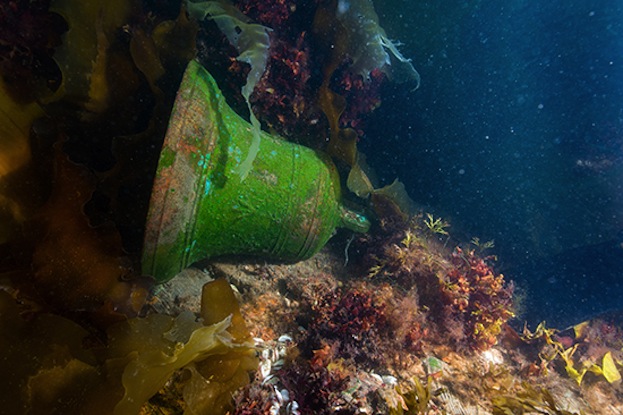Bronze Bell from Long-Lost Arctic Shipwreck Revealed

Divers recovered a bronze bell from the wreck of the HMS Erebus, a British ship that was missing for nearly 170 years after an ill-fated expedition to the Canadian Arctic.
In 1845, British Royal Navy officer and explorer John Franklin led more than 100 men on a quest to find a Northwest Passage connecting the Atlantic and Pacific oceans. But they never completed their mission; in 1846, their ships — the HMS Erebus and HMS Terror — became trapped in ice near King William Island in northern Canada.
The weeks and months that followed were grim. Many of the crewmembers died of some combination of exposure, starvation, scurvy and lead poisoning. Some may have resorted to cannibalism. Search parties looking for the missing crew turned up empty, though a few graves were later found. The fate of the ships, meanwhile, remained a mystery until this past September. [See photos of the ship's bell]
Since 2008, Parks Canada led six searches for the sunken vessels. The agency finally succeeded this year, after capturing sonar images of a wreck in the eastern part of the Queen Maud Gulf.
Underwater archaeologists dove to the shipwreck seven times over two days during the so-called 2014 Victoria Strait Expedition. They took photos and measurements of the wreck, and during the last dive, they recovered the bell. After reviewing the data they collected during that intensive investigation, Parks Canada officials felt confident in saying they had found the HMS Erebus.
"The locating and identifying of this ship goes a long way [toward] solving one of Canada's greatest historical mysteries," Canadian Prime Minister Stephen Harper said in a statement at the time.
The bell is clearly marked with the Royal Navy's broad arrow symbol, and the date 1845 is also embossed on its surface.
Sign up for the Live Science daily newsletter now
Get the world’s most fascinating discoveries delivered straight to your inbox.
"Like the chiming of a clock, the bell would have been struck every half hour both day and night to announce the march of time and to signal the changing of the crew's watches," Parks Canada representatives said in a statement.
Though the artifact is in relatively good condition, it will have to undergo at least 18 months of conservation. The bell is currently soaking in a bath of distilled water, and its chemistry is being closely monitored, according to Parks Canada.
Follow Megan Gannon on Twitter and Google+. Follow us @livescience, Facebook & Google+. Original article on Live Science.










